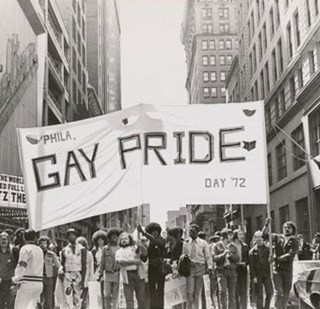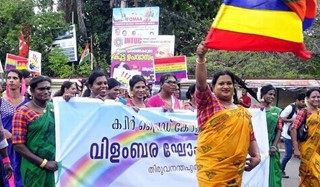
Day 4
After the first few years of protest marches in the US following the Stonewall riots there was a strong celebration of queer culture incorporated into the marches and by the end of the 1970s, as photographs of the time suggest, the first version of the rainbow flag appeared.
As time moved on Pride become more and more about celebration and visibility; though the political element has never disappeared entirely. But what is it causes so many LGBTQ+ people to cover themselves in as many rainbows as they possibly can and take to the streets?
I suspect that there are as many answers to that question as there are people who attend Pride, but I can try at least to give my own perspective, although to put the feelings into words is quite hard. The majority of LGBTQ+ people inhabit a world that is very different to that inhabited by cis-straight people, in as much as the assumptions that are made about them are generally wrong, and it is a world that can sometimes be unpredictably hostile towards them. Hence to have the world around you turned into a queer space, if only for a few hours, where those assumptions are reversed, there is no need to explain yourself or come out to anyone. Being surrounded by people like you, just feels really, really good. I think that there needs to be a specific word to describe that particular feeling (queuphoria?), and another one for the feeling you get the first time you come out and it’s okay (queerlief?).

Another role of Pride comes from the fact that social attitudes to minority groups and their legal protections can go backwards as well as forwards. This has been demonstrated recently on the world stage in Brunei and Chechnya and in the UK, with the protests on LGBTQ+ education in schools, which have an eerie feeling of the 1980s and Section 28, and have caused much anxiety in the LGBTQ+ community; though it must be noted that the general public has reassuringly supported us. Nevertheless, it is so important for LGBTQ+ people who cannot be themselves, that they see others supporting them; that they are not alone; and that a strong message is sent to LGBTQ+ youth, in particular, that they are beautiful, they are valid, and most of all, that they should never, ever be ashamed of who they are.
The final function of Pride that I shall consider here is that it serves as a testimony to those who have gone before: the pioneers who marched, protested, influenced and were arrested to give us the rights we enjoy today. Pride has evolved over the years: originally it was primarily political and was very much about trying to obtain the fundamental human and legal rights that many LGBTQ+ people were denied; but also one could argue, it was about making the fact the LGBTQ+ people existed at all generally known.
So, what does Pride mean to me personally? Well, for me it is about acceptance, being able to be yourself and being proud both of who you are and of being part of the amazingly diverse LGBTQ+ community. Most of all, however, Pride demonstrates what can be achieved through love alone and acknowledges the huge debt of gratitude that we owe to those who went before. So to them I say, “THANK YOU”.
In the final part of this series, we shall be marking LGBTQ+ STEM day and looking at the role that Professional bodies such as IPEM can play in supporting LGBTQ+ scientists and Engineers.